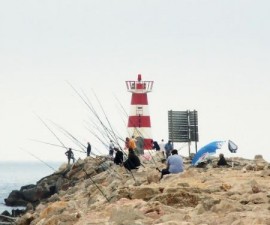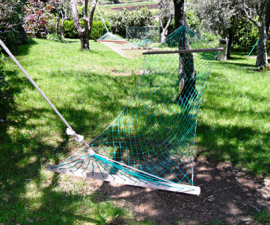The allure of the Algarve does not only lie in its abundance of sun, sea, surf, and seafood. This coastal region in Southern Portugal is home to centuries old Moorish castles, museums, art galleries, and historical landmarks found in the Vilamoura Marina and in neighbouring towns. Indeed, a visit to this part of the country isn’t complete without taking in the Algarve’s historic wonders, cultural centres, and artistic enclaves.
Roam the Ruins in Vilamoura
Modern and highly developed, Vilamoura is a common starting point for a tour around Algarve. Visitors don’t have to go far in order to behold the legacy left by the Roman Empire in the once sleepy fishing village in the south of Portugal.
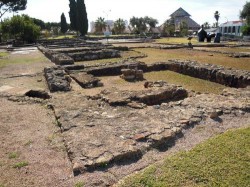 For a taste of the past, the museum of Cerro da Vila simply contains the history of Vilamoura. The Roman Ruins is within short distance from any hotel or lodge within the marina and is a sight worthy of the trip itself. History buffs would love this detour, particularly for old baths used by sailors when the area was still under Rome. This is an opportunity to see beyond Vilamoura’s urbanized fishing village and gain a fuller sense of the place’s history. Here we find second to third century villas in a compound filled with mosaics and Roman architecture.
For a taste of the past, the museum of Cerro da Vila simply contains the history of Vilamoura. The Roman Ruins is within short distance from any hotel or lodge within the marina and is a sight worthy of the trip itself. History buffs would love this detour, particularly for old baths used by sailors when the area was still under Rome. This is an opportunity to see beyond Vilamoura’s urbanized fishing village and gain a fuller sense of the place’s history. Here we find second to third century villas in a compound filled with mosaics and Roman architecture.
To dip back into the present, visit the Contemporary Art Gallery Centre in Vilamoura, which shows what contemporary artists in Portugal has been up to. Most of the works exhibited are those of local artists, since one of the museums goal is to solidify interest in the arts while also influencing the lifestyle of locals.
Exploring the Many Legacies of Faro
Not far from Vilamoura is the next stop on the cultural trip. Faro hosts many historical villas, ruins, castles, and old churches. Perhaps the oldest ruins of the Roman Empire can be found in Faro—first to second century columns, villas, and mosaics depicting fishing village minutiae, baths, and castles.
Faro also has an Archaeological Museum where many selected items from the Roman and Islamic past of the Algarve are exhibited. There is the rural villa in Faro that was once Roman territory transformed into a Christian church, and later turned into an Islamic burial site. This villa alone sweeps visitors into the rich cultural past of the Algarve.
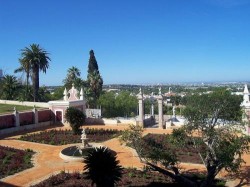 In Estoi, about seven miles off of Faro, visitors will also find a recent significant recovery of the Algarve’s culture and past: the Casa Rural das Ruinas. The house is now a centre where tourists learn about the lives of Roman who resided in the south of Portugal several centuries past, and how the Algarve served as a haven to them.
In Estoi, about seven miles off of Faro, visitors will also find a recent significant recovery of the Algarve’s culture and past: the Casa Rural das Ruinas. The house is now a centre where tourists learn about the lives of Roman who resided in the south of Portugal several centuries past, and how the Algarve served as a haven to them.
Worth seeing is also the Estoi Palace, a building that withstood a powerful earthquake during the eighteenth century. Visitors should find the relics of that era, such as prayer rooms, baths, farm structures, wine press, and more. There are also two mausoleums, and a villa showing mosaics influenced by the Roman and Islamic styles.
Archaeological wonders in Lagos
The Lagos Museum isn’t the swankiest cultural centre you’ll visit in Portugal but it houses some of the most important archaeological and historical items of the country. One of them is the sacerdotal vestments used during the final mass graced the King Sebastião, who then left to conquer Morocco but perished.
Expertly curated and managed, visitors are given ethnographic representations of prehistoric life in Lagos and the Algarve. A sixteenth century diptych of the Annunciation to Christ’s early childhood is exhibited in the museum. There are Neolithic weaponry used by the earliest settlers, prehistoric animal remains such as dinosaur bones and ammonites, as wells as pieces of sculpture, arrowheads, and ceramics.
Visiting the mystical Fortaleza de Sagres
The final stop of this cultural tour is toward the southwest of the Algarve. The Fortaleza de Sagres used to be the site of Henry the Navigator’s fortress. According to legend, an old academy for navigation was built in this mythic place.
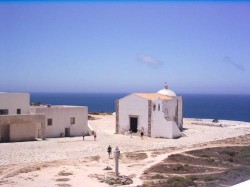 The site of the many historical events, the Fortaleza de Sagres was said to be the location of the “promontorium sanctum,” or sacred patrimony. Many believed the place was the end of the known world, quoted in ancient texts to be the worshipping grounds of followers of Hercules and Saturn. During the Islamic occupation, the Sagres was a site of pilgrimage.
The site of the many historical events, the Fortaleza de Sagres was said to be the location of the “promontorium sanctum,” or sacred patrimony. Many believed the place was the end of the known world, quoted in ancient texts to be the worshipping grounds of followers of Hercules and Saturn. During the Islamic occupation, the Sagres was a site of pilgrimage.
Visitors will find a polygonal fortress stretching across the land, historic buildings, a central tower, and barracks used during many battles. There is also a sixteenth century church of the Lady of Grace, which had gone through several restorations and styles.
